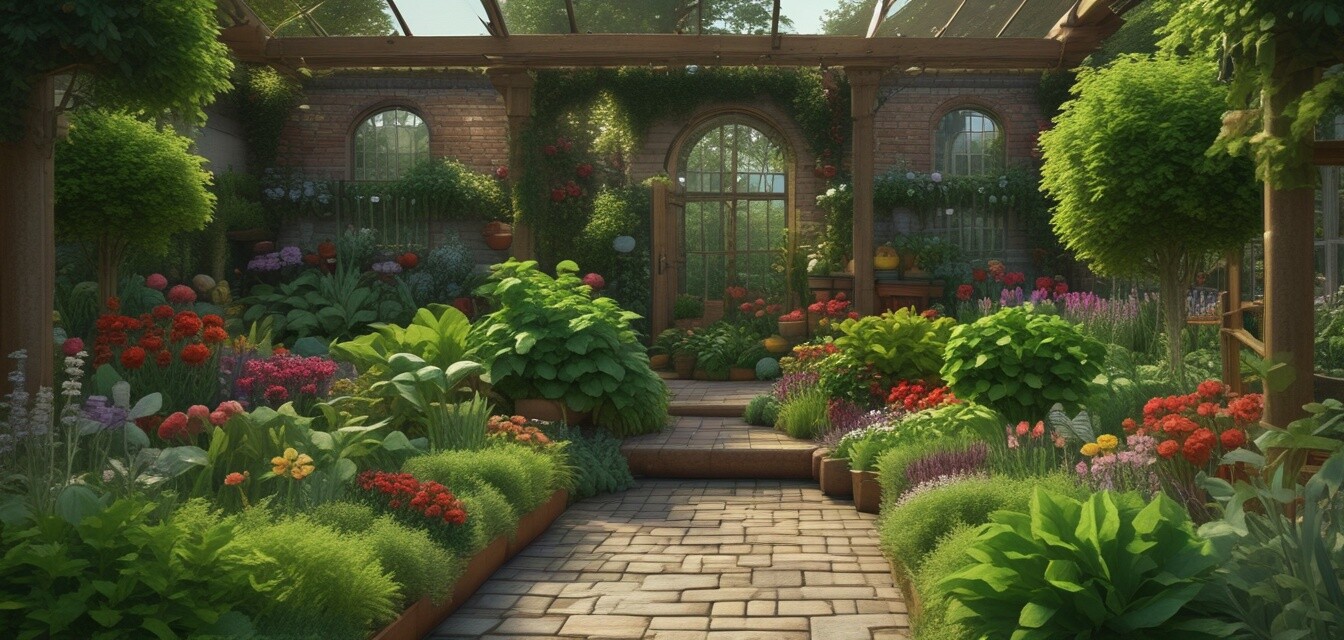
Utilizing edible plants in landscape design
- Edible plants can enhance aesthetics and functionality in gardens.
- Strategic placement of plants can maximize space and yield.
- Combining aesthetics with practicality leads to diverse garden designs.
In today's gardening world, the combination of beauty and functionality is more important than ever. Incorporating edible plants into your landscape design can bring life to your garden while also providing delicious fruits, herbs, and vegetables for your table. This article explores effective strategies for blending the aesthetic appeal of traditional landscaping with the practicality of edible gardening.
Benefits of using edible plants in landscape design
Edible landscaping not only beautifies your space but also offers practical benefits. Here are some of the key advantages:
- Produces fresh ingredients for cooking and garnishing.
- Supports biodiversity and beneficial insects.
- Creates a sustainable environment by using organic practices.
- Can lower grocery bills by growing your own food.
How to choose the right edible plants
Choosing the right plants is crucial for the success of your edible landscape. Consider the following factors:
- Climate zone: Select plants that thrive in your local climate.
- Soil quality: Test your soil to know what nutrients are needed.
- Sunlight: Ensure your selected plants receive adequate sunlight.
- Space: Consider the size of your garden and the mature size of plants.
Design strategies for incorporating edible plants
Here are some effective strategies to help you design an edible landscape:
- Layering: Plant taller plants in the back and shorter ones in the front for visual depth.
- Texture and colors: Combine different plants for varied textures and colors. Herbs can mix beautifully with flowering plants.
- Functional elements: Use edible plants as borders, hedges, or ground cover to create attractive pathways.
Examples of edible plants to consider
| Plant | Appearance | Usage |
|---|---|---|
| Raspberry | Vibrant green leaves with red berries | Fresh eating, preserves |
| Lavender | Beautiful purple flowers | Herbal tea, culinary dishes |
| Tomato | Bright green foliage with colorful fruits | Salads, sauces |
| Basil | Lush green leaves | Pesto, garnishes |
| Chard | Bold green and red leaves | Salads, sautéed dishes |
Maintaining your edible landscape
Once you’ve designed your edible landscape, maintaining it is crucial for optimal growth. Keep in mind these tips:
- Regular watering to keep plants hydrated.
- Mulching to retain soil moisture and prevent weeds.
- Monitoring for pests and diseases to act quickly.
- Fertilizing based on plant needs and soil tests.
Using eco-friendly fertilizers
Utilizing organic options can further enhance the health of your edible landscape while being gentle on the environment. Explore options at Elite Lawn & Garden!
Creating themed edible gardens
For added inspiration, consider developing themed gardens. Here are a few ideas:
- Herb spiral: Create a spiral garden for herbs, maximizing space while creating an eye-catching centerpiece.
- Salad garden: Choose a variety of greens, vegetables, and edible flowers for a colorful salad garden.
- Fruit forest: Plant a mixture of fruit trees, bushes, and vines for a more natural, forest-like aesthetic.
Conclusion
Incorporating edible plants into your landscape design is a rewarding endeavor that combines beauty with functionality. By carefully selecting plants, utilizing effective design strategies, and maintaining your garden, you can enjoy a vibrant and bountiful outdoor space. Remember, your garden reflects you—make it both an aesthetic wonder and a source of fresh, homegrown food!
Pros
- Enhances beauty and functionality in gardens.
- Provides fresh ingredients right from your backyard.
- Supports a sustainable living approach.
Cons
- Requires regular maintenance and care.
- Some plants may attract pests.
- Involves knowledge of plant care and growth needs.
Tips for beginners
- Start small: Choose a few plants to begin with.
- Research plant compatibility: Understand which plants grow well together.
- Document your growth: Keep a gardening journal for tracking success and learning.
For more ideas on enhancing your garden, visit our Garden Inspiration section.